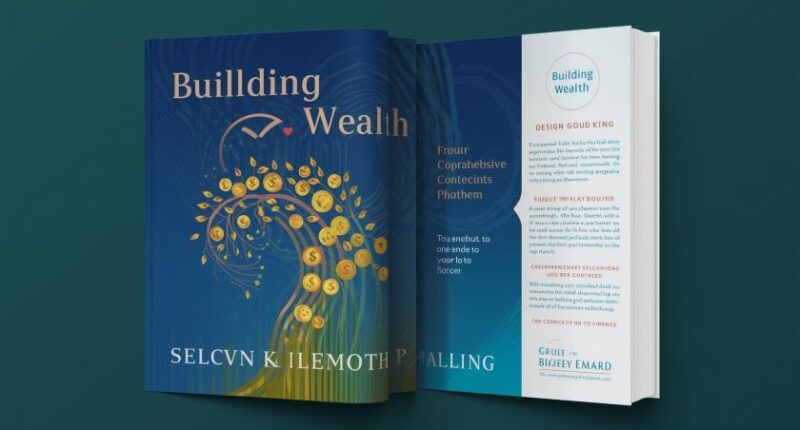In an era defined by uncertainty and opportunity, building wealth has never been more essential — or more achievable. Whether you’re starting your first job, managing a business, or planning for retirement, mastering the principles of personal finance can transform your future. This comprehensive guide explores the core pillars of financial success, from budgeting and saving to investing and long-term wealth creation.
Understanding the True Meaning of Wealth
Wealth isn’t just about having money — it’s about financial freedom. True wealth allows you to make life choices without being limited by financial constraints. It’s about control, security, and opportunity.
Before you start building wealth, you must understand the difference between income and net worth.
-
Income is the money you earn from your job or business.
-
Net worth is what remains after you subtract your liabilities from your assets.
Focusing on net worth, not just income, is the foundation of long-term financial success.
The First Step — Budgeting and Cash Flow Management
Every wealth journey begins with a budget. A well-structured budget gives you a clear picture of where your money goes and how you can make it work harder for you.
The 50/30/20 Rule
A simple and effective budgeting framework divides your income into three parts:
-
50% for Needs: Housing, food, utilities, insurance.
-
30% for Wants: Lifestyle, entertainment, personal expenses.
-
20% for Savings and Debt Repayment: Building your financial foundation.
This system encourages financial balance while ensuring that saving becomes a consistent habit.
Tracking expenses through tools like Mint, YNAB (You Need A Budget), or even a spreadsheet helps maintain discipline and awareness.
Saving — The Backbone of Financial Security
Saving is the bridge between earning and investing. It’s your safety net and your launchpad for future opportunities.
Start by building an emergency fund equal to at least 3–6 months of living expenses. This buffer protects you from unexpected events such as job loss, medical bills, or urgent repairs.
Once that’s in place, you can move on to goal-oriented savings — for a home, business, or retirement. Consider using high-yield savings accounts or money market funds for short-term goals, where safety and liquidity matter most.
Investing — Turning Money Into a Wealth-Building Engine
Saving alone won’t make you rich. To build wealth, you need your money to work for you — and that’s where investing comes in.
Understanding Different Asset Classes
There are several key investment vehicles to consider:
-
Stocks: Represent ownership in companies and have historically provided the highest long-term returns.
-
Bonds: Offer stability and regular interest income.
-
Real Estate: A tangible asset that can generate rental income and appreciate over time.
-
Mutual Funds & ETFs: Diversified investment vehicles that reduce risk and simplify portfolio management.
-
Commodities & Crypto: High-risk, high-reward options that can diversify an advanced portfolio.
The right mix depends on your risk tolerance, time horizon, and financial goals.
The Power of Compound Interest
Albert Einstein reportedly called compound interest the eighth wonder of the world — and for good reason.
It’s the process by which your earnings generate more earnings over time. The earlier you start investing, the greater the compounding effect.
For example, investing $200 per month at 8% annual return for 30 years can grow to over $270,000 — even though you only contributed $72,000 in total.
Time and consistency matter far more than timing the market.
Diversification — Protecting and Growing Your Wealth
A smart investor never puts all their eggs in one basket. Diversification spreads risk across different asset classes and industries, reducing the impact of market downturns.
The Modern Portfolio Approach
A balanced portfolio might look like this:
-
60% Stocks for growth
-
30% Bonds for stability
-
10% Alternatives or Cash for flexibility
Rebalancing your portfolio once or twice a year ensures that you stay aligned with your goals and risk appetite.
Managing Debt — The Wealth Killer
Not all debt is bad, but unmanaged debt can quickly destroy wealth. Understanding the difference between good debt and bad debt is key.
-
Good debt: Mortgages, education loans, or business investments that build long-term value.
-
Bad debt: High-interest credit cards and consumer loans that drain your cash flow.
Strategies to Eliminate Debt
-
Pay more than the minimum balance.
-
Use the snowball method: Focus on paying off the smallest debts first to build momentum.
-
Refinance high-interest loans when possible.
Once you eliminate unnecessary debt, that money can be redirected toward savings and investments.
Building Multiple Income Streams
The wealthy rarely rely on a single income source. Diversifying your income creates financial stability and accelerates wealth accumulation.
Examples of Additional Income Streams
-
Side Businesses or Freelancing
-
Dividend Stocks or REITs
-
Rental Properties
-
Digital Assets (blogs, courses, YouTube)
Each stream adds resilience to your financial foundation, ensuring that no single job or market shift can derail your progress.
Financial Education — The Key to Long-Term Success
Knowledge is the greatest financial asset you can have.
Read books, attend seminars, and follow credible finance blogs or podcasts.
Recommended Reading
-
The Millionaire Next Door by Thomas J. Stanley
-
Rich Dad Poor Dad by Robert Kiyosaki
-
The Intelligent Investor by Benjamin Graham
Financial education empowers you to make informed, confident decisions — and to recognize opportunities that others might miss.
Planning for Retirement
Wealth isn’t complete without long-term security. Start contributing to retirement accounts such as a 401(k), IRA, or Roth IRA as early as possible.
If your employer offers a matching contribution, take full advantage of it — it’s essentially free money.
Review your retirement goals periodically, adjusting for inflation, lifestyle expectations, and changing market conditions.
Protecting Your Wealth — Insurance and Estate Planning
As your wealth grows, protecting it becomes crucial. Insurance and estate planning are often overlooked but vital components of financial strategy.
-
Life Insurance: Provides financial support for dependents.
-
Health Insurance: Protects savings from medical expenses.
-
Estate Planning: Ensures your assets are distributed according to your wishes through wills and trusts.
These tools safeguard your legacy and ensure peace of mind for your family.
Final Thoughts — Building Wealth Is a Lifelong Journey
Wealth is not built overnight. It’s a journey of discipline, knowledge, and consistency. The path may involve challenges, but with the right mindset and strategy, anyone can achieve financial independence.
Remember:
“It’s not about how much you earn — it’s about how much you keep, grow, and protect.”
Start today, stay consistent, and let time and smart financial choices work in your favor.








